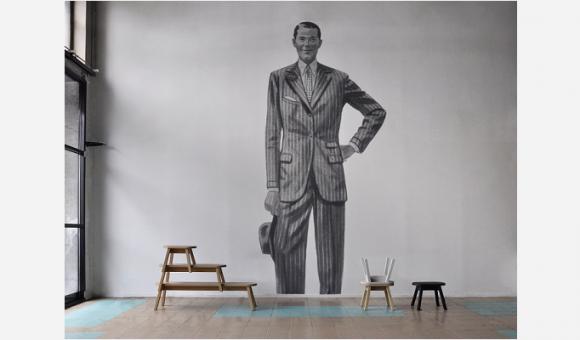
His work is described as sensitive and perceptive. Under his Brussels label, Loudordesign studio, Jean-François D'Or cleverly rewrites the history of the objects that surround us. An interview with the designer between archetypes, common sense and poetry.
The start of a new working day. Routine or exploration?
First: exploration! I don’t set out to be an expert in a particular type of object. To the contrary, each project is an opportunity for me to explore another function or another material, to pool all the data and ask the question: "how can I get the best out of the object and the material?" I like to turn the obvious on its head. That being said, habits and discoveries are not necessarily incompatible. I nurture a certain routine that I prefer to call a methodology. It is built and enriched every day by the exploration that is a natural part of any new project.
And what is this method?
It takes the form of a "mood board" which was incidentally the name of the exhibition dedicated to my work organised in 2013 by Grand Hornu Images (editor’s note: since then renamed CID). When I start a project, I do a huge amount of documentary research. I have a rather unrealistic urge to know everything about the subject. This research creates a lexical field, a reservoir of inspiration from which I draw the elements to tell a story through the future object. This is my way of giving it a rich interior, more soul, before even touching on its visual appearance. I begin each project by writing rather than drawing. I’m not interested in the strictly formal approach to the object.
Can you give us a practical illustration of this method?
Of course! Recently I designed a series of benches for MMood within Mintjens, a specialist in oak furniture. Along with other designers, I was invited by the company to create a range of contemporary furniture. I focused on the bench. The result is a modular, stackable collection seating 1, 2 or 3. The benches are available in different colours including black oak that gave the name to the series: Black Sheep. I approached this work through a juxtaposition of impressions from the place of production, the theme of the bench and personal insights. An element of fun, the game of leapfrog, appeared in the succession of different sized pieces. The black bench is a bit of an exception, it is the "black sheep" of the series. The authenticity of the "bench" as an object was also associated with a search for the streamlining of shapes and assemblies. Behind the extreme simplification of the project, its formal appearance gives clues to the story I tried to convey through it. This quest is found in each of my creations.
Loudordesign Studio has existed since 2003, what changes do you notice in your approach?
Back in 2003, everything had to be started from scratch. Projects were there but to bring them to life, we had to go out and prospect, reach out to companies. With experience, the brands, publishers, and sometimes the galleries are the ones who come to find you. The biggest change is in the geometry of this triangular relationship between the customer, the end user and the designer. The initial freedom of creation must make do with production constraints, the use of a specific material, cost-effectiveness issues. The big brands have their habits, their history, their requirements. The designer must find a way of meeting the goals while imposing their own vision of the product and at the same time anticipating the ways in which the future object will be used and its dialogue with its user...
A wish for the future?
My decision to become a designer was linked to my desire to travel. This desire is still relevant. The exhibition at Grand Hornu Images generated quite a buzz around my work. I am regularly featured at international exhibitions and fairs. Paradoxically, I now also work frequently with Belgian companies: Vervloet, Vika, Crusoe ... Belgian creativity is booming, as are its exports and that's a good thing. Products circulate around the world and create new opportunities for collaboration. Finally, it is through the vitality of brands that we meet our public. I work a lot with the French company Ligne Roset. Inevitably, the international distribution of my work means that I am less hands-on and more cut off from the end user. My wish would be to hear the impressions and see the appropriation of objects by the public.
Interview: Sylvie Reversez